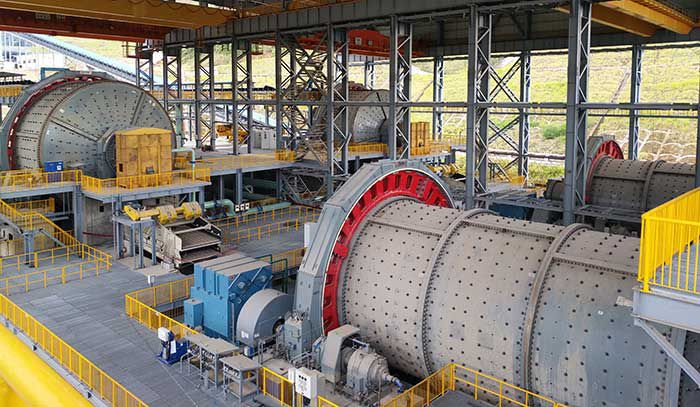Abstract
Accurately predicting the powder output of a ball mill is critical for optimizing combustion efficiency and economic performance in industrial systems. Traditional measurement methods, such as differential pressure and vibration analysis, often suffer from significant errors due to environmental complexities and operational variability. To address these challenges, this study proposes an enhanced prediction model combining an improved Whale Optimization Algorithm (IWOA) with Long Short-Term Memory (LSTM) neural networks. By optimizing LSTM hyperparameters through chaotic initialization, nonlinear adjustment factors, and hybrid differential evolution strategies, the IWOA-LSTM model achieves superior accuracy compared to conventional models. Experimental results demonstrate that the IWOA-LSTM model reduces the average relative error to 1.564%, outperforming standalone LSTM, WOA-BP, and WOA-LSTM models. This advancement provides a robust solution for real-time monitoring and control of ball mill systems in harsh industrial environments.

1. Introduction
Ball mills are pivotal equipment in coal pulverization systems, transforming raw coal into fine powder through mechanical grinding. The powder output directly influences combustion efficiency in boilers, making its accurate prediction essential for operational stability. However, traditional measurement techniques face limitations due to:
- Environmental harshness: Dust, vibrations, and temperature fluctuations degrade sensor reliability.
- Multivariate interactions: Complex interdependencies among operational parameters (e.g., inlet/outlet pressure, temperature, current) complicate direct measurement.
- Nonlinear dynamics: Time-dependent grinding processes exhibit nonlinear behaviors that challenge conventional models.
Soft sensing methods, leveraging artificial intelligence (AI), have emerged as viable alternatives. Prior studies optimized Support Vector Machines (SVMs) and Backpropagation (BP) networks using algorithms like Moth-Flame Optimization (MFO) and Particle Swarm Optimization (PSO). However, these models often struggle with local optima and poor generalization. Long Short-Term Memory (LSTM) networks, renowned for capturing temporal dependencies, offer promise but require meticulous hyperparameter tuning.
This study introduces IWOA-LSTM, a hybrid model integrating an improved Whale Optimization Algorithm (WOA) with LSTM. Key innovations include:
- Chaotic population initialization using Tent mapping to enhance search diversity.
- Nonlinear adjustment factors to balance global and local optimization.
- Differential Evolution (DE) integration to escape local optima.
The proposed model is validated using real-world ball mill operational data, demonstrating superior accuracy and adaptability.
2. Algorithm Principles
2.1 Whale Optimization Algorithm (WOA)
WOA is a metaheuristic algorithm inspired by humpback whales’ bubble-net hunting strategy. It comprises three phases:
1. Encircling Prey
Whales update positions toward the current best solution:X(t+1)=X∗(t)−A⋅∣C⋅X∗(t)−X(t)∣X(t+1)=X∗(t)−A⋅∣C⋅X∗(t)−X(t)∣
where A=2a⋅r1−aA=2a⋅r1−a, C=2r2C=2r2, aa decreases linearly from 2 to 0, and r1,r2r1,r2 are random vectors in [0,1].
2. Bubble-Net Attacking
Whales spiral around prey:X(t+1)={X∗(t)−A⋅Dif p<0.5D⋅ebl⋅cos(2πl)+X∗(t)if p≥0.5X(t+1)={X∗(t)−A⋅DD⋅ebl⋅cos(2πl)+X∗(t)if p<0.5if p≥0.5
where D=∣X∗(t)−X(t)∣D=∣X∗(t)−X(t)∣, bb is a constant, and l∈[−1,1]l∈[−1,1].
3. Searching for Prey
Whales explore randomly if A>1A>1:X(t+1)=Xrand(t)−A⋅∣C⋅Xrand(t)−X(t)∣X(t+1)=Xrand(t)−A⋅∣C⋅Xrand(t)−X(t)∣
2.2 LSTM Neural Network
LSTM addresses gradient vanishing in RNNs via gated mechanisms:
- Input Gate:
it=σ(Wi⋅[ht−1,xt]+bi)it=σ(Wi⋅[ht−1,xt]+bi)C~t=tanh(WC⋅[ht−1,xt]+bC)C~t=tanh(WC⋅[ht−1,xt]+bC)
- Forget Gate:
ft=σ(Wf⋅[ht−1,xt]+bf)ft=σ(Wf⋅[ht−1,xt]+bf)
- Output Gate:
Ot=σ(Wo⋅[ht−1,xt]+bo)Ot=σ(Wo⋅[ht−1,xt]+bo)
- Cell State Update:
Ct=ft⊙Ct−1+it⊙C~tCt=ft⊙Ct−1+it⊙C~tht=Ot⊙tanh(Ct)ht=Ot⊙tanh(Ct)
3. Improved WOA-LSTM Model
3.1 Key Enhancements to WOA
1. Chaotic Initialization
Tent mapping generates diverse initial populations:Xk+1={Xk/0.6if 0<Xk<0.6(1−Xk)/0.4if 0.6≤Xk<1Xk+1={Xk/0.6(1−Xk)/0.4if 0<Xk<0.6if 0.6≤Xk<1
2. Nonlinear Adjustment Factor
A nonlinear decay of aa improves convergence:a=2−2(ttmax)2a=2−2(tmaxt)2
3. Hybrid Differential Evolution
DE enhances global search via mutation and crossover:hi(t)=X1(t)+F⋅(X2(t)−X3(t))hi(t)=X1(t)+F⋅(X2(t)−X3(t))ui,j={hi,j(t)if rand≤qXi,j(t)otherwiseui,j={hi,j(t)Xi,j(t)if rand≤qotherwise
4. Experimental Setup
4.1 Data Collection and Preprocessing
Operational data from a DMT350/600 ball mill (Hebei Power Plant) was used, including:
- 7 input parameters: Inlet/outlet pressure, temperature, airflow, current.
- Output: Powder output (t/h).
Data Normalization:z∗=z−zminzmax−zminz∗=zmax−zminz−zmin
Dataset Split:
- Training: 450 samples.
- Testing: 50 samples.
Table 1: Normalized Ball Mill Operational Data (Partial)
| Sample | Inlet ΔP (kPa) | Outlet Pressure (kPa) | Outlet Temp (°C) | Inlet Airflow (m³/h) | Inlet Pressure (kPa) | Inlet Temp (°C) | Current (A) | Output (t/h) |
|---|---|---|---|---|---|---|---|---|
| 1 | 0.24 | 0.18 | 0.67 | 0.31 | 0.35 | 0.52 | 0.62 | 0.58 |
| 2 | 0.19 | 0.21 | 0.73 | 0.45 | 0.31 | 0.57 | 0.55 | 0.64 |
| … | … | … | … | … | … | … | … | … |
4.2 Model Configuration
- LSTM: Hidden layers L1,L2L1,L2 optimized within [10, 200]; learning rate ∈ [0.001, 0.02].
- IWOA: Population = 50, iterations = 30, F=0.8F=0.8, q=0.6q=0.6.
- Baselines: LSTM, WOA-BP, WOA-LSTM.
5. Results and Discussion
5.1 Prediction Accuracy
Table 2: Performance Metrics Comparison
| Model | MAE | RMSE | MAPE (%) | R² |
|---|---|---|---|---|
| LSTM | 2.09 | 2.361 | 3.160 | 0.872 |
| WOA-BP | 1.28 | 1.639 | 1.901 | 0.938 |
| WOA-LSTM | 1.09 | 1.409 | 1.622 | 0.954 |
| IWOA-LSTM | 1.05 | 1.310 | 1.564 | 0.961 |
- IWOA-LSTM achieves the lowest MAE (1.05), RMSE (1.31), and MAPE (1.564%), with R2=0.961R2=0.961, indicating strong alignment with actual ball mill output.
- WOA-LSTM outperforms standalone LSTM by 32.5% in MAE reduction, highlighting the value of optimization.
5.2 Convergence Analysis
The hybrid DE strategy accelerates convergence:
- MAPE drops rapidly within 6 iterations (global search dominance).
- Local refinement continues until iteration 20, achieving stable minima.
6. Conclusion
This study presents IWOA-LSTM, a novel hybrid model for ball mill powder output prediction. By integrating chaotic initialization, nonlinear adjustment factors, and DE-enhanced WOA, the model effectively optimizes LSTM hyperparameters, achieving a 1.564% average relative error. Key takeaways include:
- Superior Accuracy: IWOA-LSTM outperforms traditional and hybrid benchmarks.
- Robustness: The model adapts to noisy, multivariate ball mill data.
- Practical Relevance: Enables real-time monitoring and control in industrial settings.
Future work will explore multi-condition scenarios (e.g., coal hardness, humidity) and advanced hybrid algorithms to further enhance prediction fidelity.
